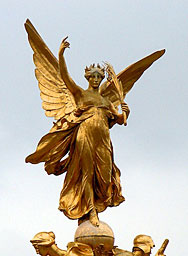Palace
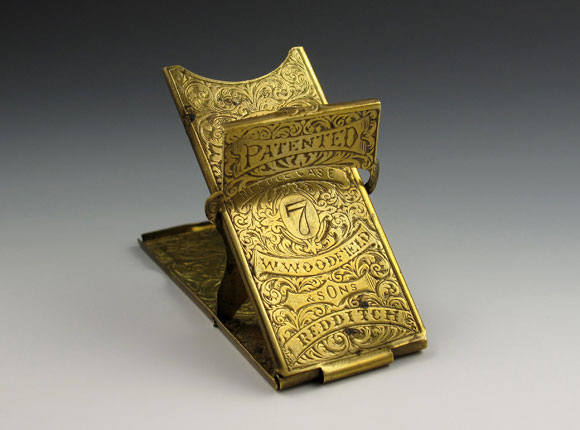
Needle Case
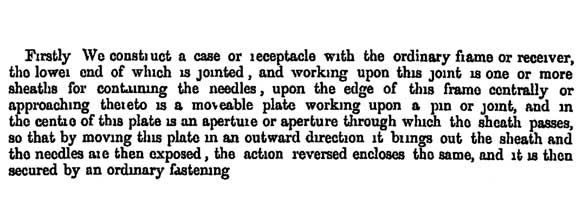
Patent description
Design Details
Needle Case Type: |
Flat-Names |
Patent/Registered to: |
William Woodfield - Redditch and Albert Fenton - Birmingham |
Patent/Design Representation #: |
Mechanical Patent #: 366 (description, no drawing) |
Patent/Design Registration Date: |
January 27, 1877 |
Location of Patent/Design Registration: |
British Library - Business and Intellectual Property Centre - London
|
Reference #: |
1877-366 |
Dimensions: |
2.6 x 4.7 |
Material: |
Brass |
Name Variations: |
W. Woodfield & Sons - Redditch |
Other Variations: |
None |
Additional Photographs
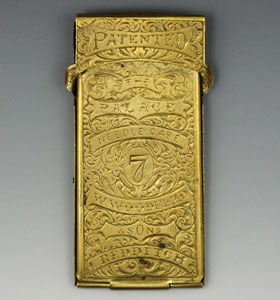
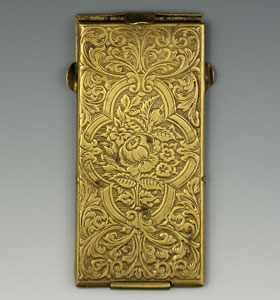
Front and back views
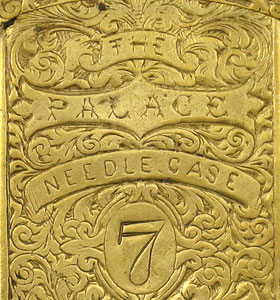
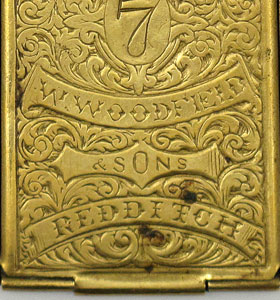
Front name and signature details
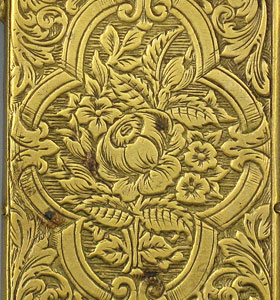
Back detail view
Facts
Buckingham Palace is the official residence and administrative center of the British Monarchy. It is located in the City of Westminster, an
area of central London, not far from Westminster Abbey, where monarchs were coroneted and many are buried, and the Houses of Parliament, the main
legislation body of the British government. With over 750 rooms, the palace is also used for special events, banquets and receptions for
visiting head of states and other dignitaries. The daily Changing of the Guard ceremony, held in front of the palace, is one of London's top
tourist attractions.
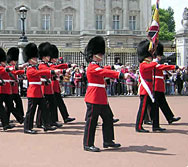
History
Buckingham Palace gets its name from the Duke of Buckingham who in 1703 built a large townhouse on the site which forms the core of the present
palace. Although this building was acquired by King George III in 1761, it wasn’t until the 19th century that is was redesigned and enlarged
by the famous British architect John Nash. Nash’s design expanded the existing building to form the three wings around a central courtyard
ones sees today. Since the rebuilding wasn’t completed until 1834, the palace didn’t become the principle residence of the royal family until
Queen Victoria was coroneted in 1837.
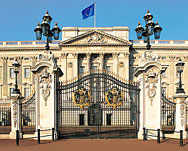
Miscellaneous
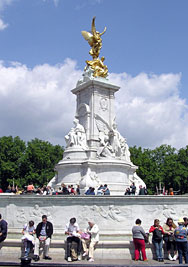
After Queen Victoria’s death in 1901 the design and construction of a monument in her honor began. When completed in 1924 the circular
shrine, located directly east of the main entrance to Buckingham Palace, became known as the Victoria Memorial. This marble structure is
composed of elaborate iconographic sculpture representing constancy, courage, motherhood, justice, truth and the empire. Atop the central
pylon, standing on a globe, is a gilded bronze statue of a Winged Victory with a victor’s palm in one hand. A memorial to the Queen’s husband
Albert, who died in 1861, can be found in Kensington Gardens.
